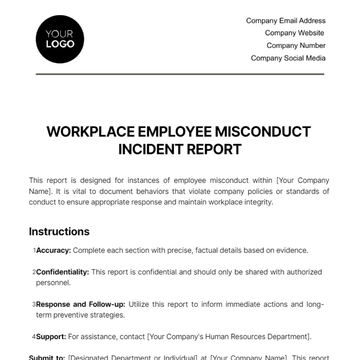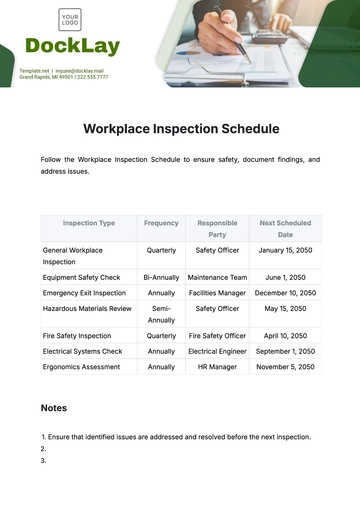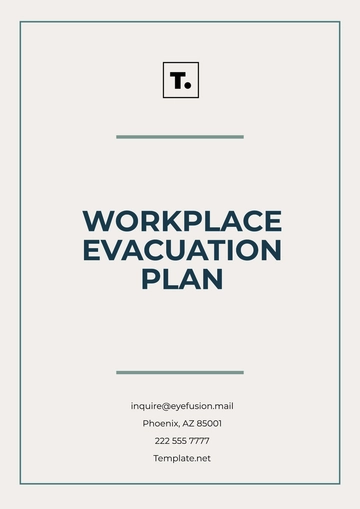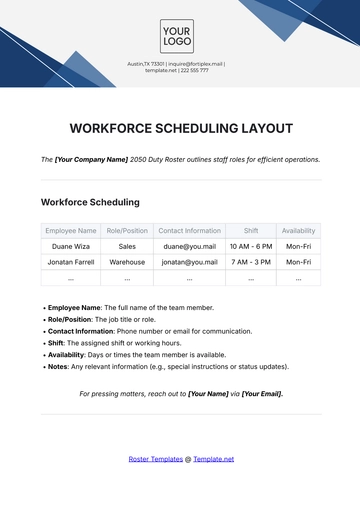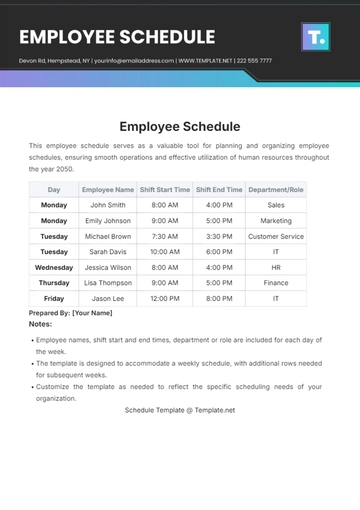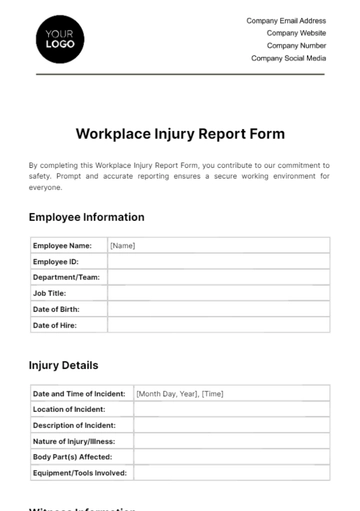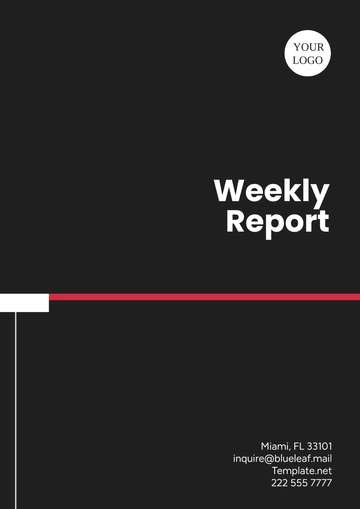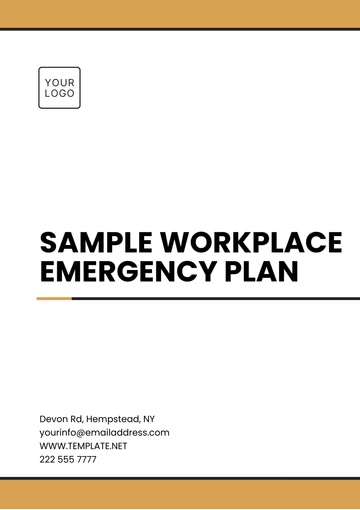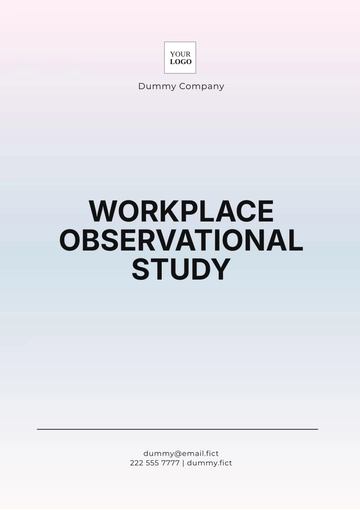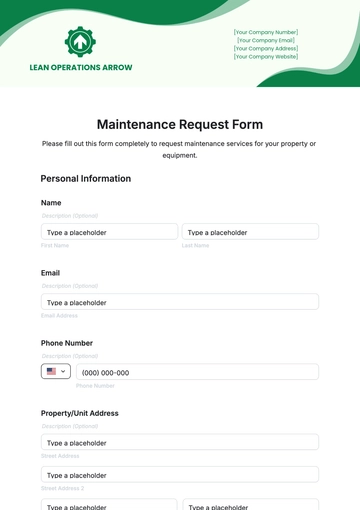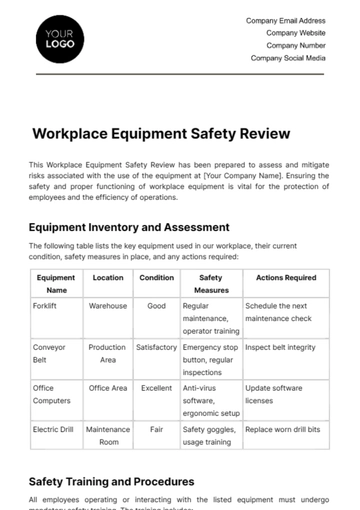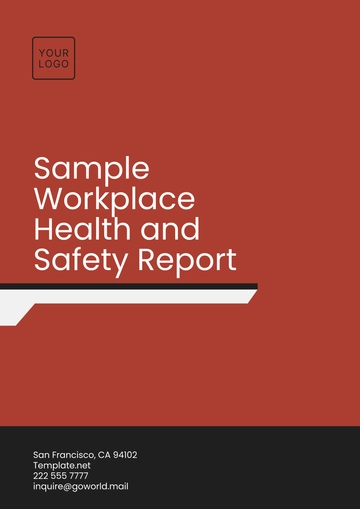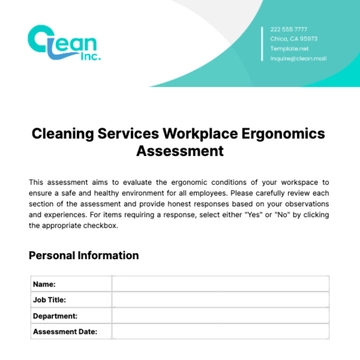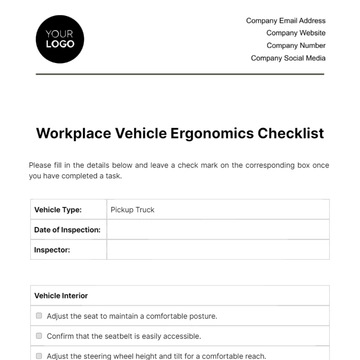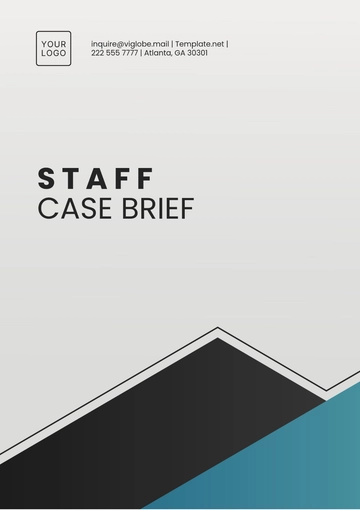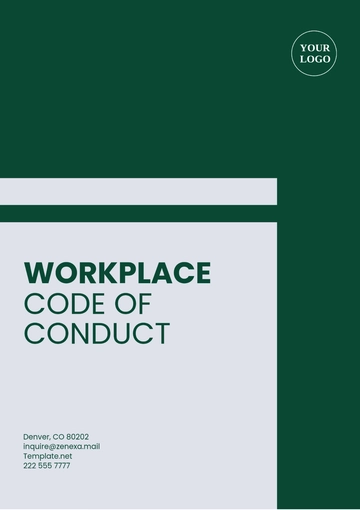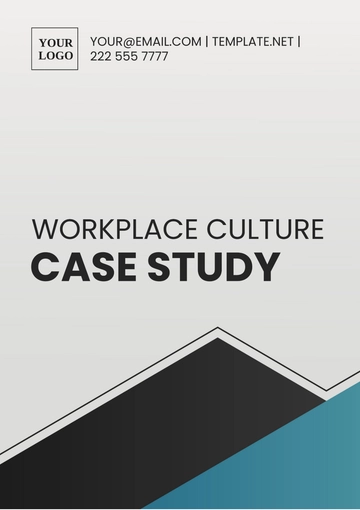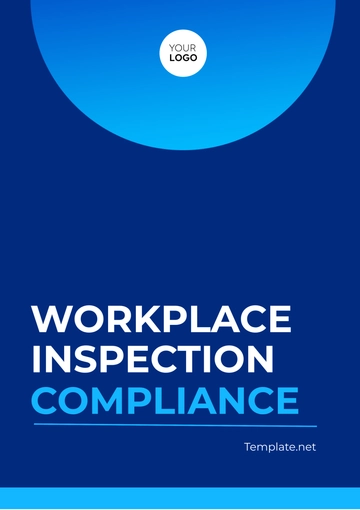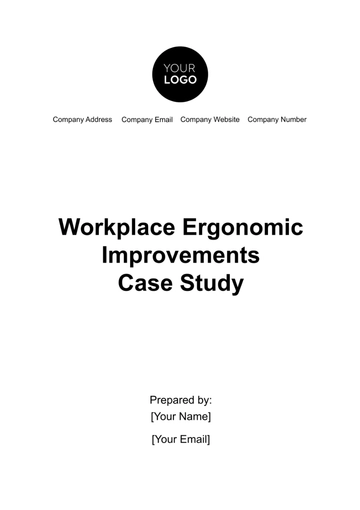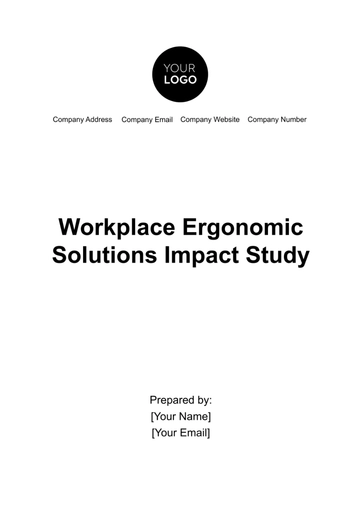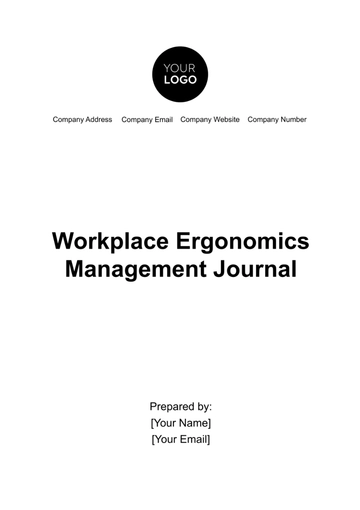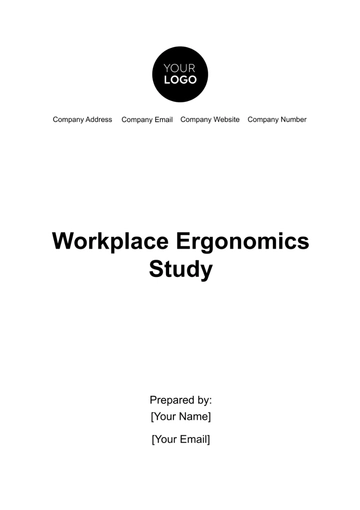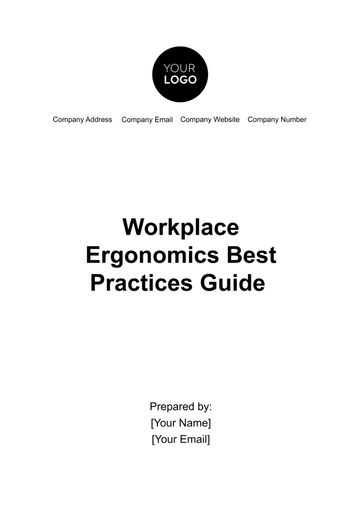Free Workplace Safety Protocol Document
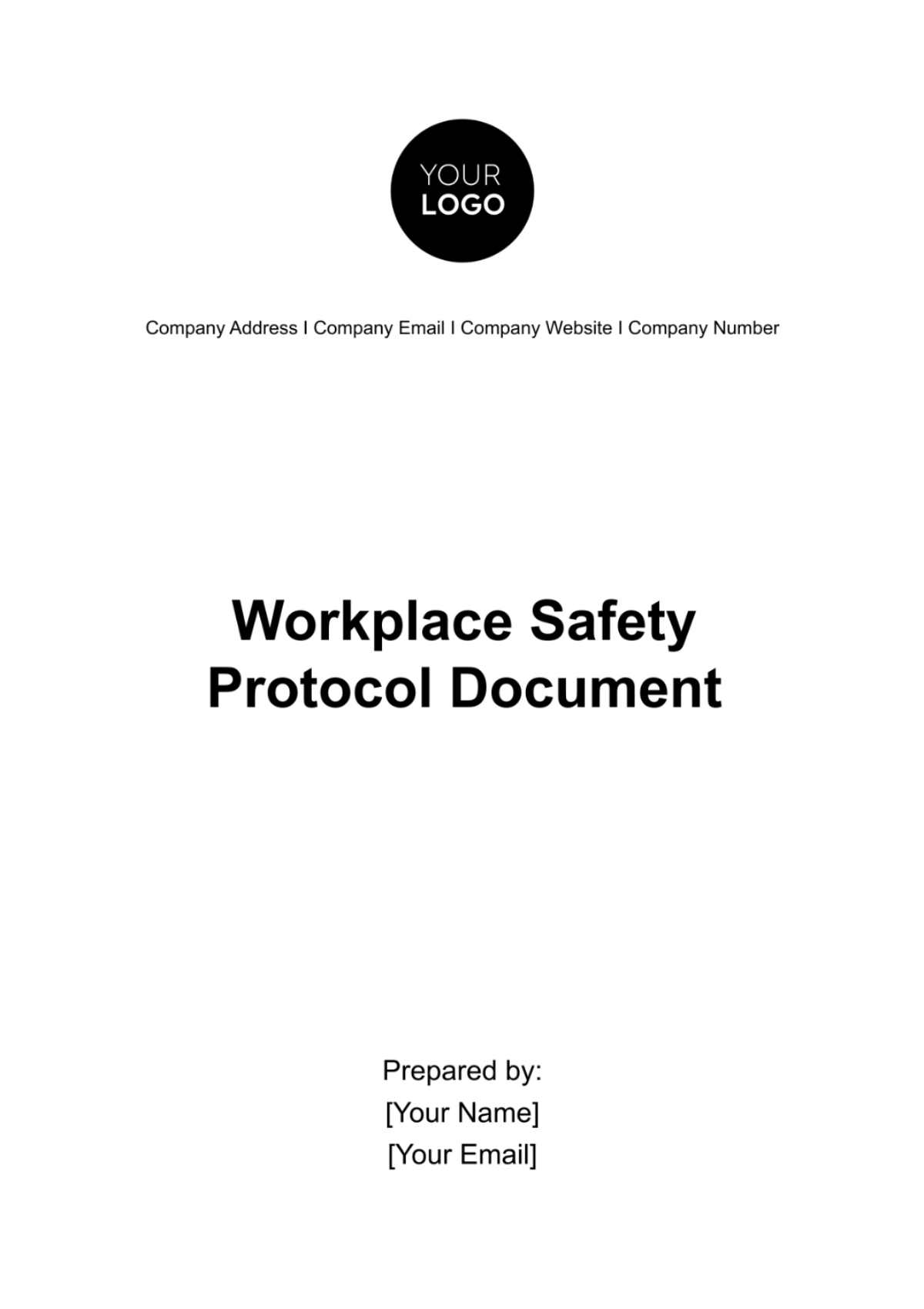
Introduction
A. Purpose
The purpose of this Workplace Safety Protocol Document is to establish comprehensive safety guidelines, procedures, and responsibilities to ensure the health and well-being of all employees and visitors while on [Your Company Name]'s premises or involved in [Event Name]. The primary objective is to create a safe working environment that prevents accidents and promotes a culture of safety awareness.
B. Scope
This document applies to all employees, contractors, visitors, and [Your Partner Company Name] personnel associated with [Your Company Name] and [Event Name]. It encompasses all physical locations, job roles, and activities conducted within [Your Company Name] and any events or projects related to [Event Name].
C. Definitions
1. PPE: Personal Protective Equipment. This includes items such as helmets, gloves, safety goggles, and masks that are provided to employees for their protection.
2. KPIs: Key Performance Indicators. These are metrics used to measure the effectiveness of safety protocols and identify areas for improvement.
Safety Procedures
A. General Safety Guidelines
1. Follow all safety guidelines at all times to prevent accidents and injuries.
2. Prioritize safety over convenience and report any unsafe conditions immediately to your supervisor or designated safety contact.
3. Encourage a culture of safety awareness among colleagues.
B. Workplace Entry and Exit
1. Use designated entry and exit points when entering or leaving the workplace.
2. Maintain clear pathways and avoid obstructing entrances and exits.
3. Keep emergency exits unblocked at all times to ensure swift evacuation in case of emergencies.
C. Personal Protective Equipment (PPE)
1. [Your Company Name] provides necessary Personal Protective Equipment (PPE) to employees and visitors.
2. Wear the appropriate PPE as required for your specific job tasks and roles.
3. Ensure proper maintenance, cleaning, and disposal of PPE items as instructed in the provided guidelines.
D. Hazardous Materials Handling
1. Identify and label hazardous materials in accordance with regulatory standards.
Follow safety data sheet (SDS) instructions for the safe handling, storage, and disposal of hazardous substances.
2. Promptly report any spills, leaks, or accidents involving hazardous materials to the designated safety contact.
E. Emergency Evacuation Procedures
1. Familiarize yourself with the workplace's evacuation routes and assembly points.
2. Participate in regular evacuation drills to ensure readiness.
3. Assist colleagues and visitors in evacuating the premises safely if it can be done without jeopardizing your safety.
F. Reporting Safety Incidents
1. Report all incidents, accidents, and near misses promptly to your supervisor, safety officer, or designated safety contact.
2. Utilize the Safety Incident Report Form provided in Appendix 10.3 to provide detailed information about the incident.
3. Encourage open reporting without fear of reprisal to ensure that potential safety hazards are addressed promptly.
Safety Training
A. Training Program Overview
[Your Company Name] is committed to providing comprehensive safety training to all employees, contractors, and individuals associated with [Event Name]. Our training program aims to:
1. Equip personnel with the knowledge and skills to work safely.
2. Ensure compliance with safety regulations and protocols.
3. Foster a culture of safety consciousness.
B. Program Components
1. New Employee Orientation: All new employees will undergo safety orientation to familiarize themselves with our safety policies and procedures.
2. Regular Refresher Training: Ongoing training sessions will be scheduled at regular intervals to reinforce safety knowledge.
3. Specialized Training: Employees engaged in high-risk tasks will receive specialized training tailored to their job roles and responsibilities.
Training Schedule
C. Training Schedule
Month | Training Focus |
January | New Employee Orientation |
February | Hazardous Materials Handling |
March | First Aid and CPR |
April | Fire Safety and Evacuation Drills |
May | Personal Protective Equipment (PPE) |
June | Emergency Response Procedures |
July | Workplace Safety Culture |
August | Fall Protection and Working at Heights |
September | Electrical Safety |
October | Chemical Safety |
November | Machinery and Equipment Safety |
December | Year-End Review and Celebration |
D. Training Records
[Your Company Name] maintains comprehensive training records to ensure accountability and compliance. Training records include:
1. Employee name and ID
2. Date of training
3. Training content covered
4. Instructor's name
5. Assessment results
6. Certification status
7. Assessment and Certification
Employees and individuals receiving training will be assessed to ensure understanding and competency in safety procedures. Certification will be awarded upon successful completion of training and assessment. Certifications will be valid for one year, and retraining will be conducted as needed.
E. Assessment and Certification
Employees and individuals receiving training will be assessed to ensure understanding and competency in safety procedures. Certification will be awarded upon successful completion of training and assessment. Certifications will be valid for one year, and retraining will be conducted as needed.
Safety Inspections
A. Inspection Schedule
[Your Company Name] conducts regular safety inspections to identify and mitigate hazards promptly. The inspection schedule includes:
1. Weekly inspections for high-risk areas.
2. Monthly inspections for general workplace safety.
3. Quarterly inspections for machinery and equipment safety.
4. Annual comprehensive safety audits.
B. Inspection Checklists
1. Are emergency exits clear and accessible?
2. Are fire extinguishers properly maintained and inspected?
3. Is personal protective equipment (PPE) available and in good condition?
4. Are hazardous materials properly labeled and stored?
5. Are electrical systems and equipment in safe working condition?
6. Are first-aid kits adequately stocked and accessible?
7. Are machinery and equipment inspected and maintained per manufacturer's guidelines?
8. Are safety signage and warnings in place and legible?
9. Are employees following safety protocols?
C. Corrective Actions
When safety inspections identify hazards or non-compliance with safety protocols, corrective actions will be taken promptly. Corrective actions may include:
1. Isolating or addressing immediate safety concerns.
2. Implementing long-term solutions to prevent future occurrences.
3. Communicating findings and corrective actions to all relevant personnel.
4. Conducting follow-up inspections to ensure the effectiveness of corrective measures.
Safety Communication
A. Internal Communication
[Your Company Name] values effective internal communication to promote a strong safety culture among employees. Key components of internal safety communication include:
1. Safety Meetings
Regular safety meetings will be conducted to discuss safety topics, share incident reports, and brainstorm safety improvement ideas.
[Your Name] will lead safety meetings to ensure that employees are informed about safety measures and best practices.
2. Safety Reporting System
[Your Company Name] has established a safety reporting system that allows employees to report safety concerns, incidents, and near misses confidentially and without fear of reprisal.
Reports can be submitted through [Your Company Email] or using the Safety Incident Report Form.
3. Safety Training
Safety training sessions will include information on safety communication channels and the importance of reporting incidents and hazards.
All employees will be informed about the process for raising safety concerns.
B. External Communication
[Your Company Name] recognizes the importance of communicating safety protocols and measures to external parties, including contractors, visitors, and [Your Partner Company Name]. Key elements of external safety communication are:
1. Contractor and Visitor Orientation
All contractors and visitors will receive safety orientation upon entering [Your Company Name] premises.
Orientation will include information about safety procedures, emergency contacts, and site-specific safety hazards.
2. [Your Partner Company Name] Communication
[Your Company Name] will collaborate with [Your Partner Company Name] to ensure that safety protocols are communicated effectively.
Regular meetings and correspondence will be used to align safety efforts and address any safety concerns jointly.
3. Incident Reporting for Visitors
Visitors will be made aware of the safety reporting system and encouraged to report any safety concerns or incidents.
[Your Company Name] will provide contact information for reporting incidents while visiting [Your Company Name] locations.
Incident Management
A. Incident Reporting
[Your Company Name] has a robust incident reporting process in place to promptly address safety concerns. Key components of the incident reporting process include:
1. Reporting Channels
All employees and stakeholders are encouraged to report safety incidents, accidents, or near misses using the established reporting channels.
The Safety Incident Report Form is a standardized tool for documenting incident details.
2. Notification
Upon receiving a safety incident report, [Your Company Name] will notify relevant parties, including supervisors, safety officers, and [Your Partner Company Name], if applicable.
Immediate actions may be taken to ensure the safety of employees and visitors.
B. Investigation
A thorough investigation will be conducted for each reported safety incident to determine root causes and contributing factors.
Investigations will be led by trained personnel and may involve interviews, documentation review, and on-site assessments.
C. Corrective Actions
1. Based on investigation findings, appropriate corrective actions will be identified and implemented to prevent the recurrence of similar incidents.
2. Corrective actions may include process changes, additional training, equipment modifications, or procedural updates.
D. Follow-up
1. [Your Company Name] will communicate investigation outcomes and any actions taken to all relevant parties.
2. Lessons learned from incidents will be shared with employees to enhance safety awareness and prevent future occurrences.
Safety Performance Metrics
A. Key Performance Indicators (KPIs)
[Your Company Name] is committed to monitoring and improving workplace safety through a set of Key Performance Indicators (KPIs) that reflect the effectiveness of our safety protocols. These KPIs are designed to measure safety performance and identify areas for enhancement. Some of the key safety KPIs include:
1. Lost Time Injury Frequency Rate (LTIFR)
LTIFR measures the number of work-related injuries that result in lost workdays per 1 million hours worked.
Formula: (Number of Lost Time Injuries / Total Hours Worked) x 1,000,000.
Total Recordable Incident Rate (TRIR)
TRIR includes all work-related incidents that require medical treatment, restricted work, or result in lost workdays per 1 million hours worked.
Formula: (Number of Recordable Incidents / Total Hours Worked) x 1,000,000.
2. Near Miss Reporting Rate
This rate represents the number of near misses reported by employees and stakeholders.
It encourages the reporting of potential safety hazards before they lead to actual incidents.
3. Safety Training Completion Rate
This KPI reflects the percentage of employees and stakeholders who have completed the required safety training.
It ensures that everyone is adequately trained in safety procedures.
B. Data Collection
Data collection is essential to track safety performance accurately. [Your Company Name] employs the following methods for collecting safety-related data:
1. Incident Reports
All safety incidents, accidents, near misses, and injuries are documented in incident reports.
These reports include details such as date, time, location, individuals involved, and descriptions of the incident.
2. Training Records
Records of safety training sessions, including attendance, content covered, and assessment results, are maintained for each employee.
These records are used to verify compliance with training requirements.
3. Safety Inspections
Data from safety inspections, including checklists, findings, and corrective actions, are documented and analyzed.
Trends in inspection data help identify areas requiring improvement.
C. Data Analysis
[Your Company Name] regularly analyzes safety data to identify trends, areas of concern, and opportunities for improvement. Data analysis methods include:
1. Trend Analysis
Examining historical safety data to identify recurring patterns or trends in incidents or hazards.
Identifying areas where corrective actions are frequently required.
2. Benchmarking
Comparing safety performance metrics to industry standards and best practices.
Benchmarking helps [Your Company Name] assess its safety performance in relation to peers and industry norms.
D. Continuous Improvement
Safety performance metrics serve as a foundation for continuous improvement efforts. [Your Company Name] is committed to:
1. Corrective Actions
Addressing identified issues promptly and effectively.
Implementing corrective actions to prevent the recurrence of safety incidents.
2. Training Enhancement
Updating and enhancing safety training programs based on data analysis and identified training gaps.
Ensuring that employees receive the most current safety information.
3. Safety Culture Promotion
Encouraging and rewarding employees for actively participating in safety reporting and adherence to safety protocols.
Promoting a strong safety culture where safety is everyone's responsibility.
- 100% Customizable, free editor
- Access 1 Million+ Templates, photo’s & graphics
- Download or share as a template
- Click and replace photos, graphics, text, backgrounds
- Resize, crop, AI write & more
- Access advanced editor
Foster a culture of safety and preparedness with Template.net's Workplace Safety Protocol Document Template. This indispensable tool provides clear guidelines and procedures, promoting a secure work environment. Download now to establish and communicate vital safety protocols, enhancing awareness and precaution within your organization. Prioritize workplace safety—get your template today!
